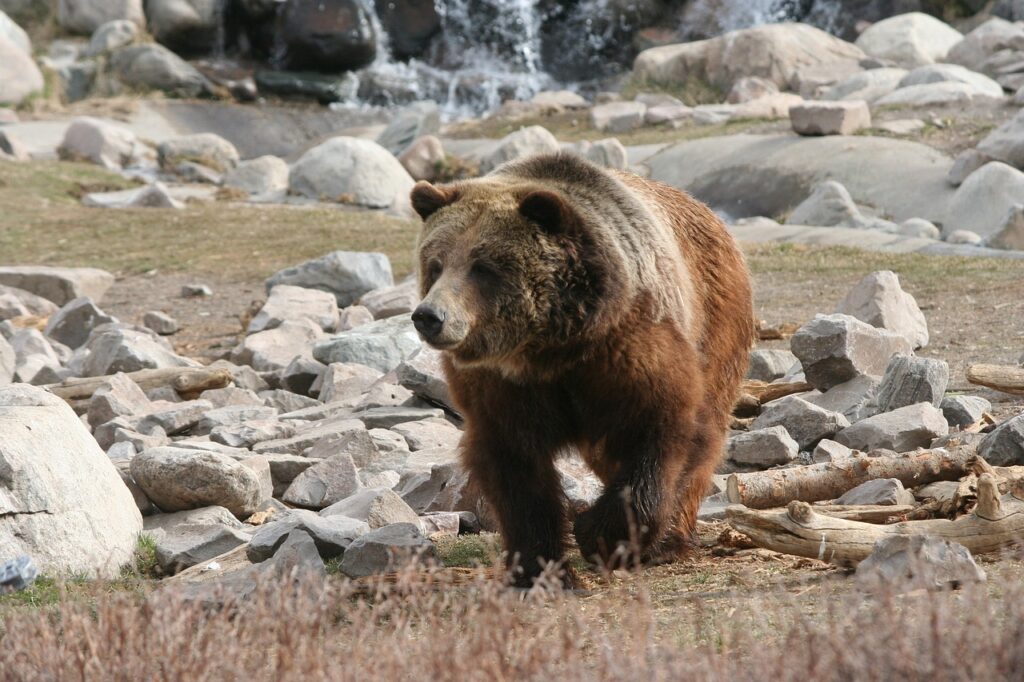Yellowstone is home to two species of bears: grizzly bears and black bears. The grizzly bear is typically larger than the black bear and has a large muscle mass, or hump, above its shoulders. The grizzly bear face is a concave shape, and the black bear has a more straight facial profile. Grizzlies tend to be more aggressive toward humans than black bears.
The estimated Greater Yellowstone Ecosystem grizzly bear population peaked in 2014 to an estimated 757. The 2019 population declined to an estimated 728 bears. An estimated 150 grizzly bears occupy ranges that lie partly or entirely within Yellowstone.
Bears are active primarily at dawn, dusk, and night. In spring, we’ve often seen grizzly bears around Yellowstone Lake, Fishing Bridge, Hayden and Lamar valleys, Swan Lake Flats, and the East Entrance. In mid-summer, we have commonly seen them in the meadows between Tower–Roosevelt and Canyon, and in the Hayden and Lamar valleys. We generally see black bears in open spaces within or near forested areas between Mammoth, Tower, and the Northeast Entrance.
But recently, we’ve not seen many or even any bears! Where did they go? Rangers explained that with the higher spring and summer temperatures in the Yellowstone area, the bears are sticking to the higher elevations. We managed to spot a black bear in the higher elevations overlooking the Lamar Valley, and rangers told us they expected more to wander into the valley as temperatures cooled off a little and berries ripened in the area.

